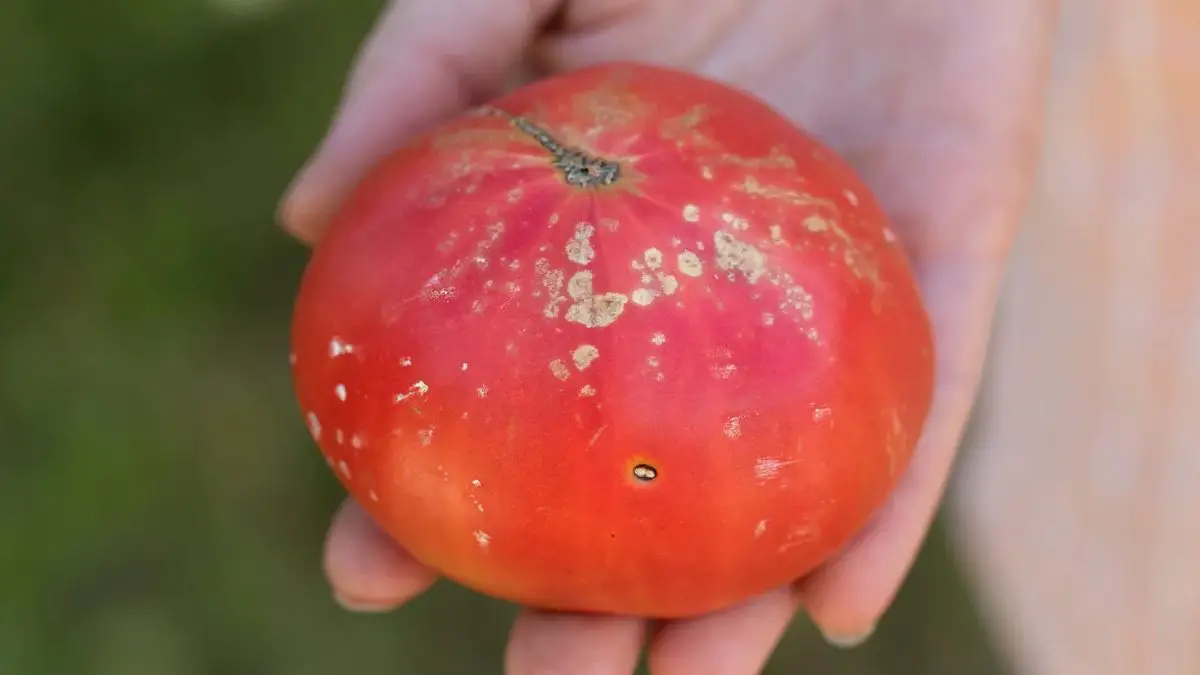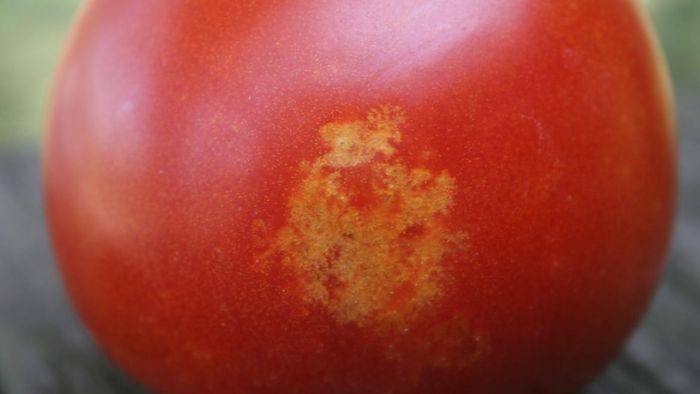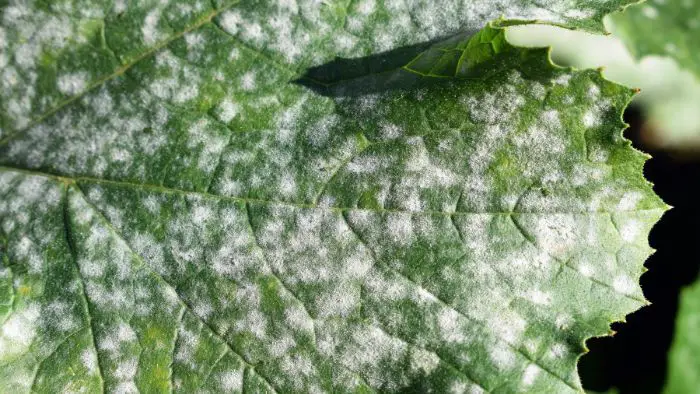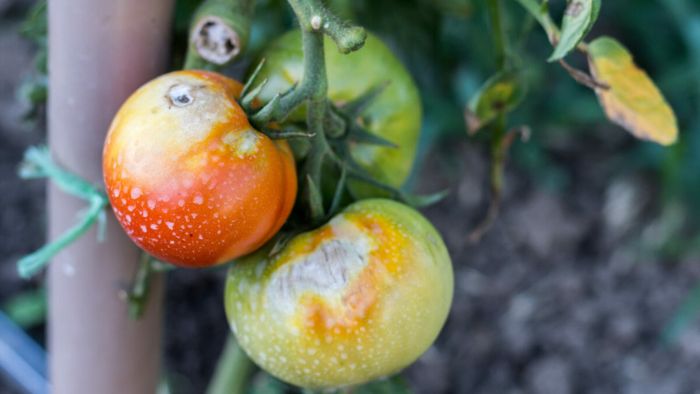Last Updated on December 8, 2022 by Guillermina
As a gardener, you want to pride yourself in your produce. And you are growing tomatoes, tomatoes with white spots is something no gardener wants to see! What could be the cause? Can it be prevented or treated?
In this article, we will discuss 6 possible causes of tomatoes developing white spots.
What Causes White Spots In Tomatoes?
Solanum lycopersicum, commonly known as the tomato plant is a hardy plant and grows well in U.S. Department of Agriculture zones 5 through 8. It is very easy to grow and is highly productive.
The tomato plant is however highly susceptible to disease and pest infestation that may cause the plant to develop unsightly and undesirable white spots.
The root causes of white spots on tomatoes are different. They are mostly due to environmental conditions that result in pest infestations, nutrient imbalances, etc. The treatment or prevention of these causes will obviously depend on the cause. We will discuss these causes by category, along with respective treatment options and courses of action.
Six Causes Of Tomatoes With White Spots
1. Pest infestations
The stink bug (Bagrada hilaris) is a common pest that infests tomatoes, causing white spots on them. Stink bugs are however no the only bugs you should look out for, beetles, aphids, whiteflies, thrips, leafhoppers, spider mites, and lead-footed bugs all like to infest tomatoes.
Insects are little irritations for every gardener out there. If you see white spots on your tomato leaves or white lines inside your tomatoes, it could be an indication that you have an insect feeding on your tomatoes, most likely to be leafhopper bugs or stink bugs.
If you see these insects and their eggs, you can remove them manually. You will usually find them hiding under the leaves. Removing them before they spread is a good way to ensure that the rest of your crop does not get affected. Another way to get rid of these pests is to use organic pesticides such as neem oil. Follow the application directions on the packaging and you will be free of your pest problems.
2. Nutrient deficiency
Underfeeding your tomatoes, whether in the soil or in a soilless medium such as in aquaponics can lead to your tomatoes developing white spots. Tomatoes are heavy feeders so you need to make sure that you provide them with sufficient nutrients to support their growth.
3. Powdery mildew
Powdery mildew is a fungus that commonly affects tomato plants. Its symptoms on affected plants are white spots on the leaves or stems on the plants. White spots in the tomato leaves may appear fuzzy and moldy. Oidium Lycopersicum is a type of powdery mildew that mostly causes cotton spots on tomatoes.
Powdery mildew thrives in warm and humid environments with temperatures of 59°F-80.6°F. As a result, it spreads in the spring and summer months. It can stay in the soil and can also be spread by the wind.
To avoid powdery mildew, improve air circulation where your tomatoes are planted. Another method is to apply a preventative fungicide and make sure that water does not touch the plant leaves.
4. Environmental conditions
If your tomatoes are exposed to too much sun or shade, it can cause fungus to develop. If the fungus develops, you should prune the plant to remove the affected leaves.
Avoid giving your tomatoes too much sun exposure to avoid white clothes or spots on your tomato fruit.
5. Bacterial infection
Bacterial canker is one of the worst causes of white spots in tomatoes. It can also contaminate your gardening tools and undecomposed tomato plant for up to 3 years, and can transfer to other plants, especially peppers. It spreads mostly during warm seasons with temperatures ranging from 75°F to 90°F.
There is unfortunately no cure for this deadly disease. The best you can do is avoid it from entering your garden. You can do this by sterilizing tools before you use them, buying disease free seedlings, and never using composted material from a previously infected plant.
6. Late blight
Large brown and white spots on leaves could be caused by the tomato fungal disease, late bright. This disease is caused by the fungus Phytophthora infestans. It is highly contagious and can kill tomatoes in a matter of days
Can I Eat Tomatoes With White Spots?
Tomatoes with white spots on the inside are safe to eat. You can simply cut out the spot on the tomato, the other parts will be fine and will not affect you. You may however notice some slight changes in the taste of the tomato.
Whether the tomatoes are damaged by stinkbugs, they are still edible. The white fibrous parts can be hard to eat so simply cut them out and eat the rest of the fruit. It would be a waste to throw the entire fruit away
Tomatoes that have been infected with bacterial canker have no known harm to humans when they are cooked. The acidity of the fruit may however change. This may make the fruit unsuitable for canning and as a preservative.
Tomatoes infected with powdery mildew may also be safe to eat. However, some people may be allergic to powdery mildew and therefore need to be careful.
Conclusion – Tomatoes With White Spots
Now that you know the cause of white spots on your tomatoes, and how to spot the various signs, your worries are over. You will now be able to confidently diagnose and administer the right form of treatment.
Tomatoes are such a joy to grow and there is nothing better than enjoying the fruits of your labor when you start harvesting and eating them. Here’s to never having to ask the question “what are the white spots on my tomato leaves”.
If you enjoyed reading this article or found it helpful, please share it with your family and friends.

An aquaculture specialist and freelance writer. Passionate about anything sustainable living, such as growing your own food, and if you can do it in conjunction with fish farming, even better! I currently work as an aquaculture researcher where I can expand and share my knowledge and skills on aquaculture, crop farming and adding value to wastewater by using it to grow food products. I enjoy reading and learning as much as possible, and writing is another avenue for me to share the knowledge I gain with others. I want my writing to inspire people to try their hand at gardening, whether indoors or outdoors. You can even start by keeping a few houseplants indoors to help you gain a bit of confidence if you need to.






